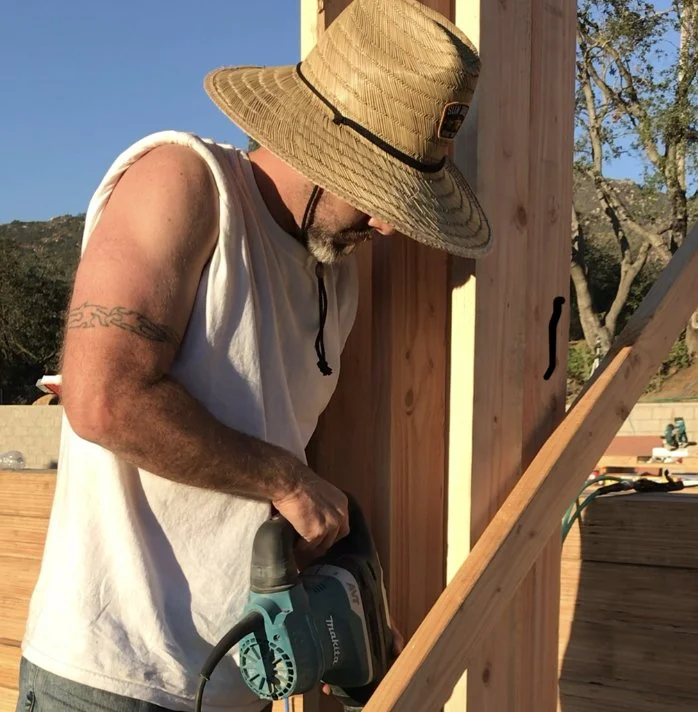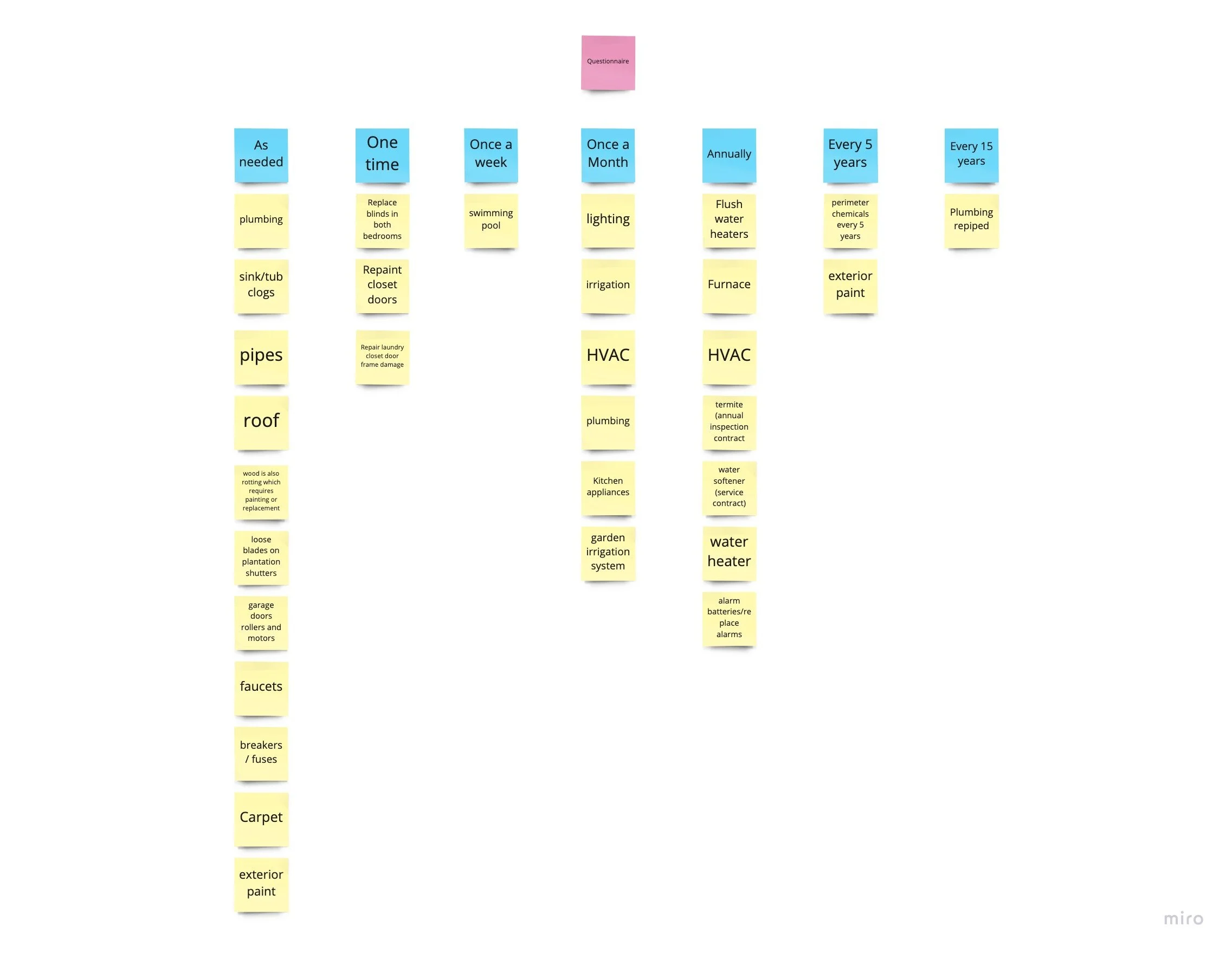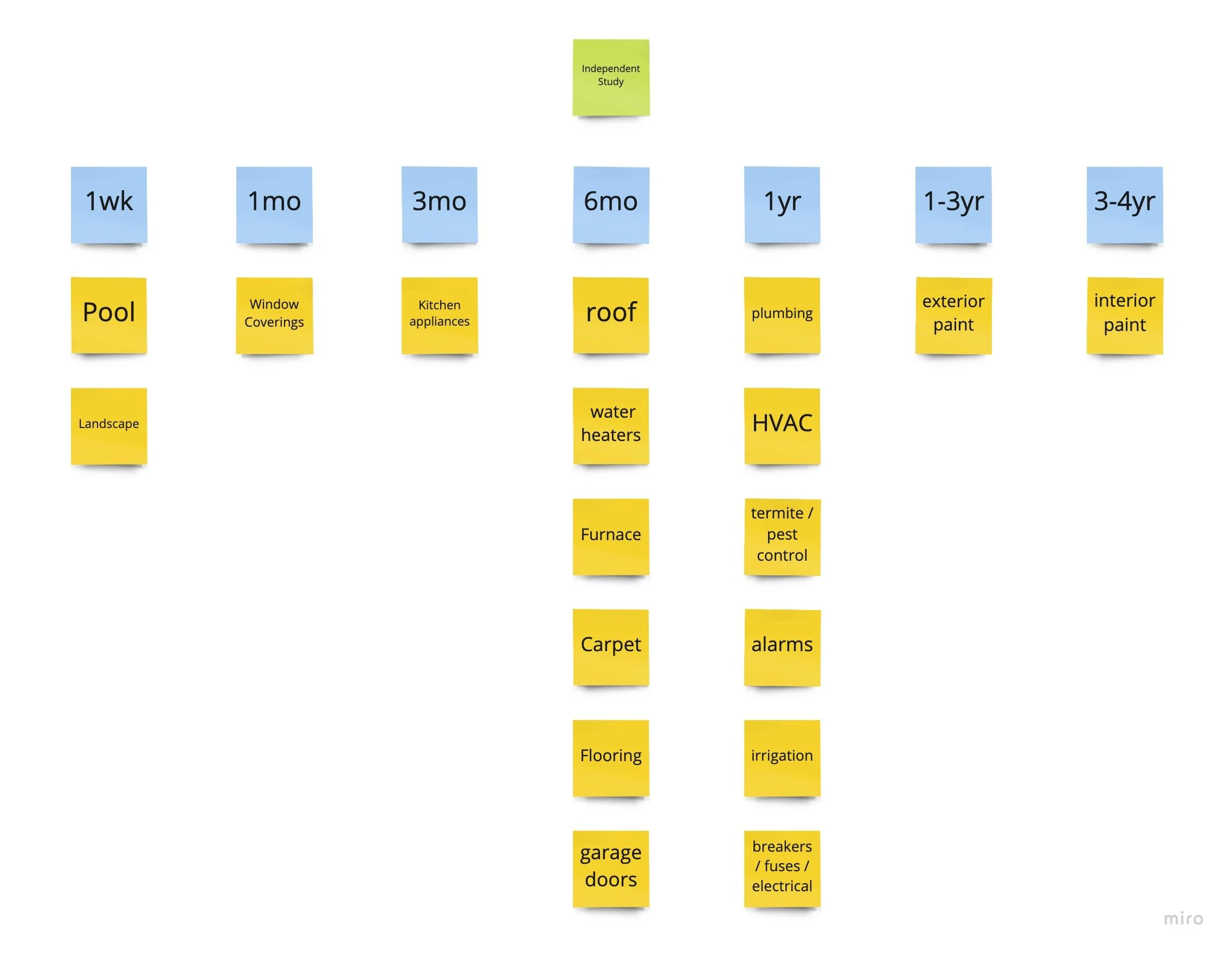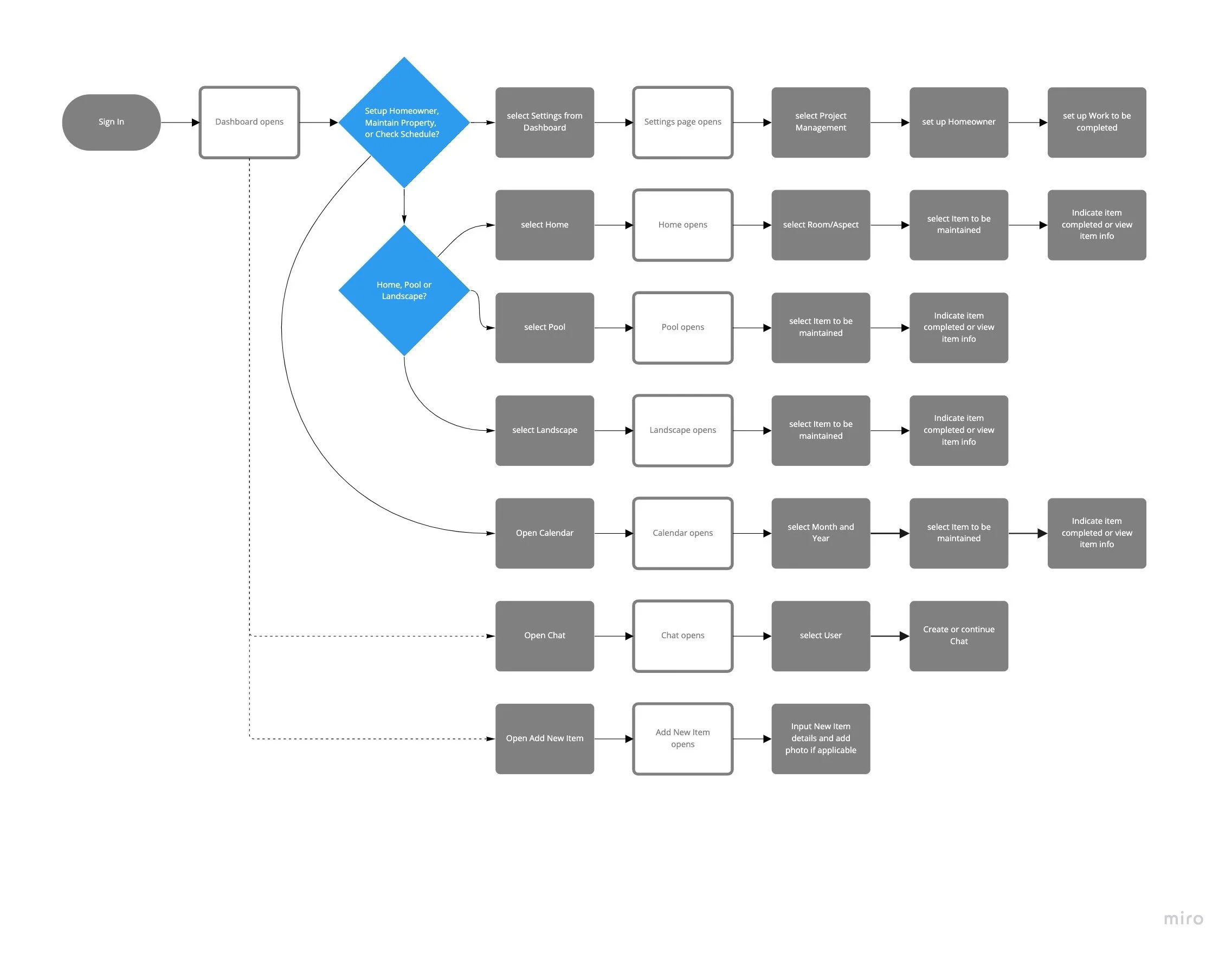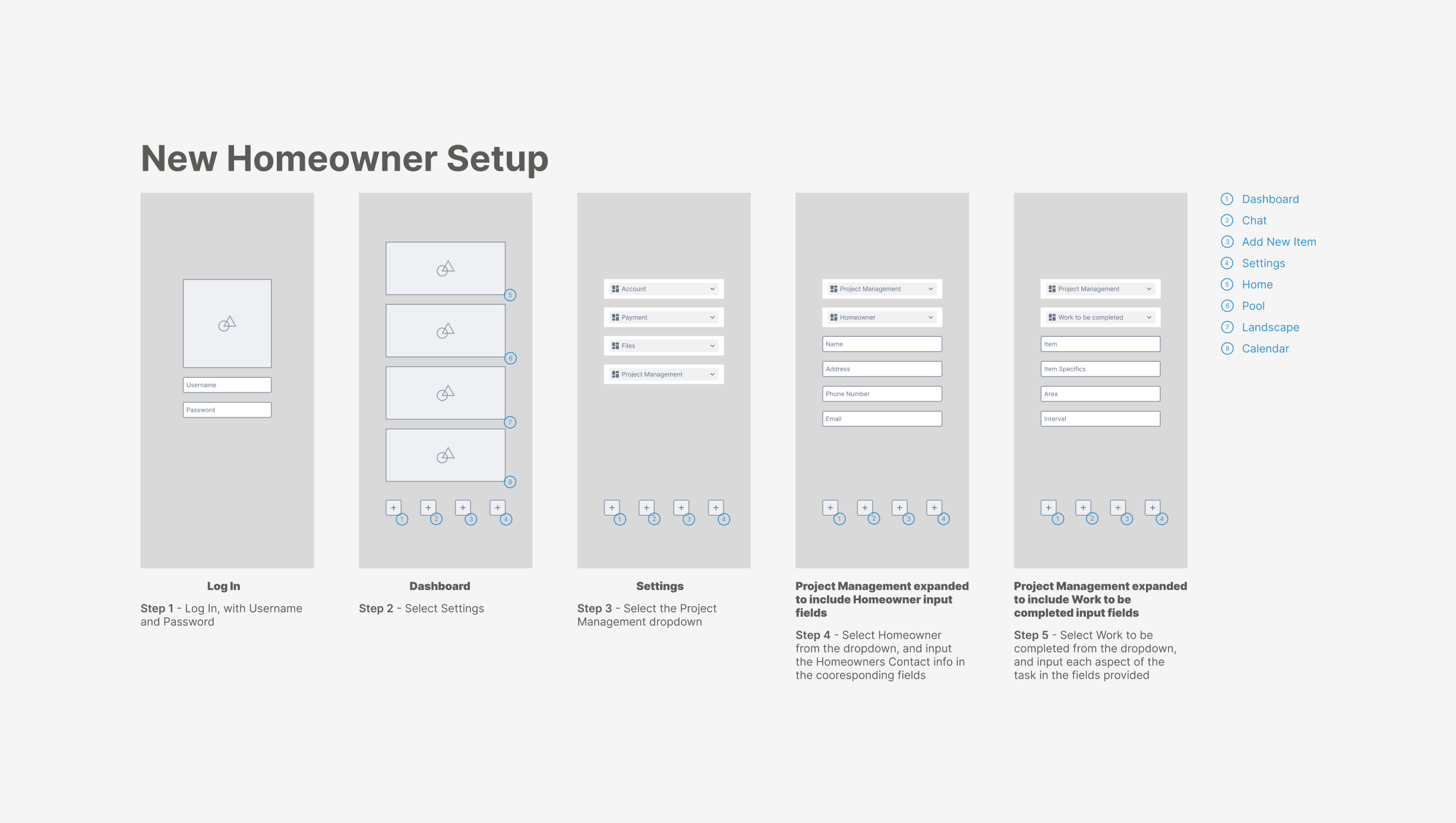Home Pool Landscape
HPL (Home Pool Landscape) is a mobile app design that allows Homeowners and Contractors to connect in order to schedule regular maintenance at intervals, as well as identify and communicate additional problems with the home that may arise.
Roles and Responsibilities
UX Research / UX Design / UI Design
My position within this case study is unique, in that I myself am a persona as well. As a tradesperson, I’ve been very close to the process. Because of this, I understand the needs of the Homeowner and General Contractor in a way that I wouldn’t, had I been coming to this project in a UX research or design only capacity.
For the Contractor to be successful in this application, I needed to understand the needs and requirements of the Homeowner. I initially envisioned this as two parallel case studies, but later realized that they depended on one another and that I needed to approach this in a more holistic way. For this reason, I’ve completed this case study focusing on the Homeowner’s needs, while factoring in Contractor needs as an ancillary function.
Problem
As a Contractor, I want to be able to schedule and complete required maintenance with my Homeowner, so that they can have a home that’s both great-looking and well-functioning for many years to come.
Through this project, I sought to explore what kind of work goes into maintaining a home, the intervals generally associated with completion of these items, and how to best facilitate the recommended work to be completed.
Personas
General Contractor
Responsible for the day-to-day oversight of a construction site, management of vendors and trades, and the communication of information to all involved parties throughout the course of a building or project.
Homeowner
A person who owns the house or apartment that they live in.
Trades
A Tradesman ("Trades") is a skilled worker who specializes in a particular trade or craft.
Scope
Scheduler
Reminder
Communication Tool
Constraints
Only General Contractor has the ability to set up Homeowners and work to be completed.
Homeowners have read only access other than chat and add new item function
Interviews
Conducted with questions such as the following:
What are some things that you anticipate would need maintenance in your home?
How often do you see these items being completed in a year, or what interval of time would you generally check on these items?
Do you keep records of this maintenance? How and what items would you keep record of?
Do you generally wait for something to break, or are you proactive about home maintenance?
Comparative Analysis
Conducted using an existing maintenance app, Upkept, as well as the scheduling and communication app, Clickup.
Literature review
Consisted of referencing manufacturer’s suggested maintenance schedules, articles on home maintenance, and appliance manuals.
Insights
Key insights:
Homeowners may not always know what items need regular maintenance.
Homeowners may not always know the recommended manufacturer, or builder timeframes for completion
of maintenance.Many items have scheduled maintenance timeframes to stay in compliance with warranty.
Design
User Flow Macro:
New home purchase / Addition / Renovation
Homeowner / Contractor set expectations
for work to be completed as well as intervals for completion
Work completed per recommendation / client preference
Homeowner identifies / reports any additional items to
be completed as needed
Additional work completed per client request
*Process repeats steps 3 through 5
Based on research during the Discovery phase, it was determined that user needs would be best met with scheduling, reminding, and communication capabilities. Below are the property type frames, expanded to show rooms, room details, and pertinent information about the items in the room.
Tasks can also be sorted by month, by selecting the calendar feature from the dashboard.
Chat enables users to communicate throughout the process. Users can can be assigned specific tasks, schedule or reschedule these tasks, and be reminded when tasks are to be completed.
New items can be added via the “Add new item” feature. This can be a new task to be added to the interval-based rotation, or request for an addition to, or renovation of, the existing home. From here, the General Contractor would either add the task, or provide a quote for the addition/renovation for the Homeowner’s review.


